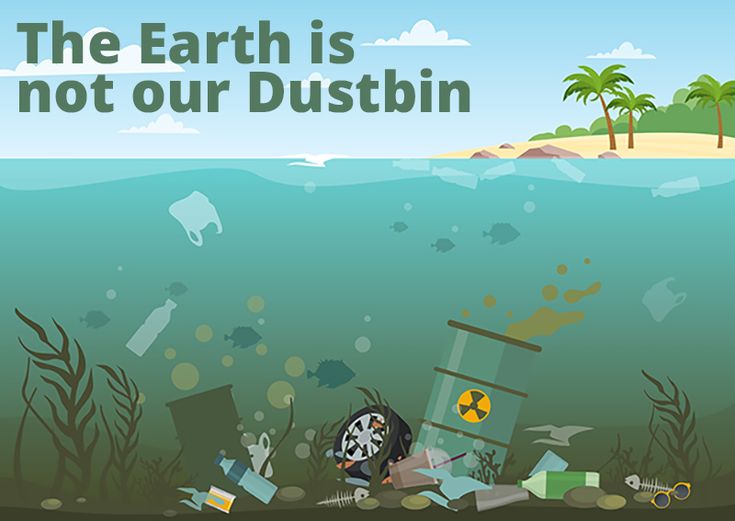Understanding the Importance of Water Pollution
Water is essential for life on Earth. However, pollution threatens the safety of our water. Learning about the causes and effects of water pollution will help you understand this important issue.
What is Water Pollution?
Water pollution occurs when harmful substances contaminate water bodies like oceans, rivers, lakes, and groundwater. This contamination makes the water unsafe for drinking, swimming, and fishing. It also harms plants and animals that live in polluted waters.
Pollutants come from many sources, including sewage, trash, fertilizers, pesticides, industrial waste, and oil spills. Some pollutants are chemicals, like bleach or soap. Others are pathogens, like bacteria and viruses. These pollutants make water unsafe for humans and wildlife.
Water pollution spreads easily through the hydrologic cycle. When it rains, pollutants on land can wash into waterways. From there, they flow downstream to lakes and oceans. Groundwater pollution can spread underground to wells and springs. Once water is polluted, it is very difficult to clean up again.
Types of Water Pollution
There are several major types of water pollution you should know about:
Surface water pollution – Contamination of rivers, lakes, and oceans. Sources include sewage, litter, farming chemicals, and factory waste.
Groundwater pollution – Contamination of groundwater aquifers. Sources include landfills, mining, and chemicals from lawns and farms.
Microplastic pollution – Tiny plastic particles from products like exfoliating face washes, tires, and synthetic fabrics. These do not biodegrade and accumulate in water.
Thermal pollution – Increased water temperatures, often due to power plants discharging hot water into water bodies. This affects ecosystems.
Oil pollution – Oil spills from ships at sea and leaking underground storage tanks on land.
Understanding the types of water pollution will help you grasp the scale of the issue. Different types of pollution require different solutions.
Causes of Water Pollution
Many human activities lead to water pollution:
Sewage – Wastewater from homes and industry often contains pathogens, oil, chemicals, and other hazardous substances.
Industrial waste – Factories legally and illegally dump dangerous chemicals, contaminated wastewater, and hot water into water supplies.
Mining – Mining processes expose sulphides in rocks to air and water, creating sulfuric acid runoff. Mine tailings release heavy metals.
Farming – Fertilizers, animal waste, pesticides, and soil erosion add nutrients and pathogens to waterways, causing algal blooms and low oxygen levels.
Oil spills – Leaks and spills from ships at sea and pipelines on land heavily pollute oceans, rivers, and beaches with oil.
Urban runoff – Rainwater picks up motor oil, antifreeze, paint, pet waste, fertilizers, pesticides, and other urban pollutants and carries them to streams and lakes.
Litter – Trash like plastic bags, six-pack rings, bottles, and cigarette butts wash into waterways and break down into microplastics over time.
Understanding these causes can help you support solutions that reduce pollution at the source.
Effects of Water Pollution
Contaminated water can cause severe environmental and public health issues:
Drinking water pollution – Pathogens from sewage make drinking water dangerous, causing diseases like cholera, dysentery, typhoid, and polio. Chemical pollution also poses health risks.
Marine life impacts – Oil spills and plastic pollution kill birds, fish, and mammals. Fertilizer runoff creates oxygen-depleted dead zones. Acid drainage from mines poisons aquatic life.
Loss of biodiversity – Pollution reduces plant and animal species diversity in water ecosystems by making habitats unlivable for many sensitive species.
Algal blooms – Fertilizers promote rapid, harmful algal blooms that suffocate fish and create hypoxic dead zones. Toxins from these algae contaminate seafood.
Reservoir damage – Pollution clogs reservoirs with sediment, reducing storage capacity for drinking water and irrigation.
Economic losses – Water pollution costs billions per year in environmental damage, health impacts, and lost tourism and seafood industry revenue.
Being aware of these wide-ranging effects demonstrates the importance of protecting water quality.
Preventing Water Pollution
Many effective solutions can reduce water pollution at the source:
Upgrade sewage systems – Modern treatment plants remove pathogens, nutrients, and other contaminants from wastewater before it is discharged.
Reduce industrial waste – Stricter regulations and fines ensure factories meet wastewater treatment standards. Pollution control technology also helps.
Sustainable farming practices – Methods like contour plowing, crop rotation, and avoiding excessive fertilizer use prevent agricultural runoff.
Oil spill prevention – Double-hull ships reduce oil spills. Improved regulations and response plans also help contain spills.
Trash reduction – Picking up litter, recycling, and avoiding single-use plastics like straws and bags helps stop plastic pollution.
Public education – Informing people about the causes and effects of water pollution encourages them to make small changes that add up.
Every positive action to prevent pollution helps – from properly disposing of motor oil, to picking up dog waste, to choosing green household products. We all have a role to play in keeping our water clean.
Testing and Treating Polluted Water
Even with excellent pollution prevention, water quality testing and treatment remains necessary:
Source water testing – Routine testing at reservoirs and groundwater sources identifies contamination issues that need resolving.
Water treatment – Processes like filtration, chlorination, and UV radiation remove pathogens, chemicals, microplastics, and other pollutants from drinking water supplies.
Wastewater treatment – Wastewater plants filter sewage, use microbes to break down organic waste, remove nutrients, and disinfect effluent before discharge into waterways.
Toxic waste management – Safe storage, disposal, and treatment of industrial and hazardous waste keeps these pollutants isolated from water supplies.
Remediation – Polluted sites can be cleaned up over time through actions like dredging, bioremediation using microbes, and pumping and treating contaminated groundwater.
Monitoring – Ongoing water quality monitoring tracks pollution levels and ensures clean water standards are met.
Investing in water treatment and remediation technologies is crucial for providing everyone with safe, clean drinking water.
How You Can Help Reduce Water Pollution
Many small actions in your daily life make a real difference in the fight against water pollution:
Properly dispose of household hazardous waste like paint, cleaners, motor oil, and old medications instead of pouring them down the drain.
Limit use of harsh chemicals, fertilizers, and pesticides in your lawn and garden. Look for eco-friendly alternatives.
Save water by taking shorter showers, turning off taps while brushing your teeth, and switching to water-efficient appliances. This reduces wastewater.
Reduce everyday plastic waste by carrying reusable bags and bottles. Cut out single-use plastics like straws, cups, and utensils.
Safely dispose of pet waste in the trash instead of leaving it on the ground where it can wash into storm drains.
Join a local river or beach cleanup. Make sure trash ends up in the right place – the garbage can!
Speak out in support of water protection policies like stronger sewage treatment standards and better funding for water infrastructure.
Following these tips will help you prevent water pollution wherever you live. Share them with your family and friends to multiply the impact! Protecting water quality starts with small acts by every one of us.

